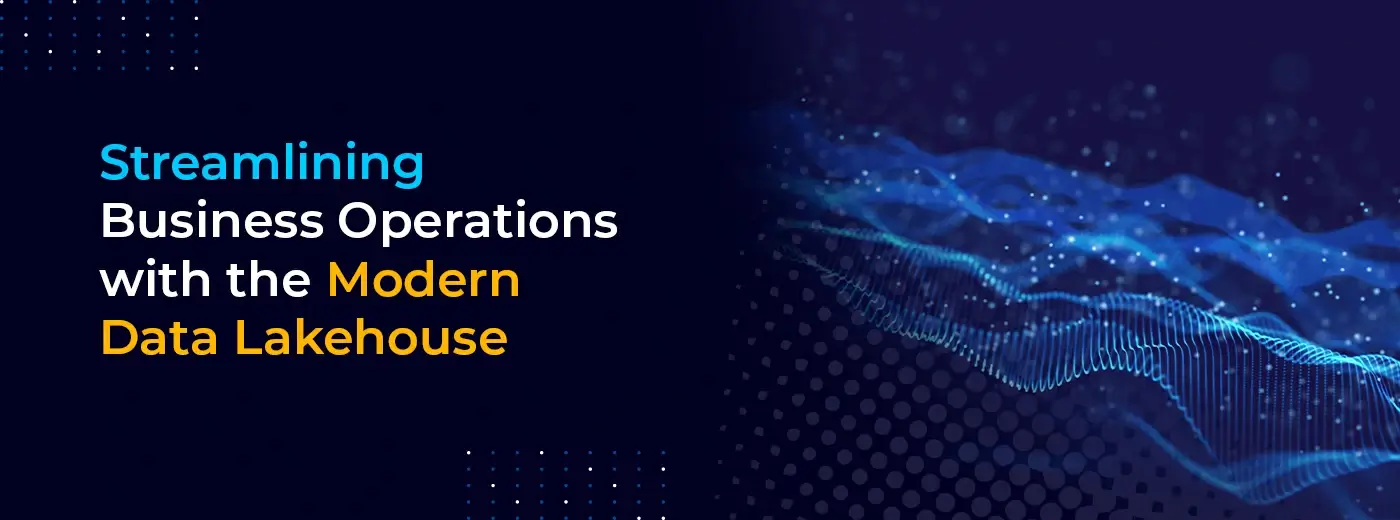
Sign up to receive latest insights & updates in technology, AI & data analytics, data science, & innovations from Polestar Analytics.
Editor’s Note:
In this article on Data Lakehouse, we answer the million-dollar question of Data warehouse vs Data Lakehouse vs Data Lake by giving a brief synopsis of why and how it emerged. Keep reading if you want to understand the nuances of lakehouse wrt Databricks, and Fabric!
Are you in this state: Bored of the fact that everyone is talking about Gen AI, when in reality, all you can see is the true obstacle behind it? The data. The testament to the confused data ecosystem is the current data, machine learning and AI landscape, which looks something like this:

TLDR: The MAD landscape is as chaotic as neural network hidden layers.
But with 72% of top-performing CEOs (according to IBM) saying competitive advantage depends on who has the most advanced generative AI and Artificial intelligence; and ML being the Top 1 priority of companies (multiple reports)– we believe it is important to ask this question: Is your data actually capable of supporting all this?
To answer this question let’s take a trip back in the data timeline, to see how the data needs and the data management needs have evolved:
Data Lakehouse is a hybrid data storage and processing platform that combines the best of both traditional data lake and data warehousing technologies: low-cost storage in an open format accessible by a variety of systems from the former, and powerful management and optimization features from the latter.

Lakehouse architecture, which you can see in Databricks, Microsoft Fabric, etc. aims to reduce the cost, operational overhead, and complexity of bringing data for multiple purposes from Business Intelligence to Artificial Intelligence.
Though the journey of data lakehouses has started with Uber, then Netflix, now majority of the Fortune 500 companies have already started their journey with them. Three of the main perceivable benefits of using Data Lakehouse are:
Though we’ve kind of spoken about all three of them and how the evolution in data management brought out the necessity to have more than one of them. We’ll try to compare them in the simplest way possible.
From the emerging need to stay agile to adapting quickly – the need to balance cost with the growing need for data management is balanced with Data lakehouse.
Differences between Data Warehouse, Data Lake, and Data Lakehouse

TL;DR: Data Lakehouse stores data in a similar format to data lake but the transactional meta data layer defines which objects are part of a table version like a data warehouse. From the greater flexibility of interoperability like that of data lakes and allowing ACID transactions like Data warehouses – data lakehouse is an amalgamation of both the ideas.
The purpose behind the why Data Lakehouse must be clear by now. So, let’s dive into the ‘how’. A usual data lakehouse architecture consists of 5 layers namely:

With the advent of Microsoft fabric and One Lake i.e. Azure Data lakehouse has become more mainstream than it was before. It's worth mentioning that the "Curated layer" (in a Microsoft Fabric architecture) can be replaced with a Data Warehouse when needed. The lakehouse in Fabric can be created very easily, with the following options in place.
You might find more details on Azure data lakehouse architecture and where to get started here.

Databricks’ Lakehouse makes it easy to automate and orchestrate ETL pipelines, previously you must have come across Azure Databricks (which is usually used with Azure Synapse) or their Delta Live tables to navigate the complexities of infrastructure management, task orchestration, error handling, etc.

There are obviously other players in the market ranging from Amazon Redshift, Google Cloud BigQuery, Salesforce Data cloud, Apache Hudi, and more. The key considerations while choosing between them can be about: Performance, Cost, Data variety, Scalability, integration capabilities, and governance.
We’ve seen the benefits of data lakehouse from being more economical than the two-tier architecture, a simplified architecture in preparing data, increased reliability by reducing data quality issues & duplicity, improved governance with consolidation, to increased scalability for the future.
As organizations recognize the value behind it, especially in this era of AI – it would be pivotal in playing a central role in driving data-driven decision making and innovation. The future of data lakehouses is bright, and their continued evolution will undoubtedly shape the next generation of data platforms – all that’s left is for you to adopt it well.
Talk to our data engineering experts to see it where and how this fits in your data management strategy.
About Author

Data & BI Addict
When you theorize before data - Insensibly one begins to twist facts to suit theories, instead of theories to suit facts.